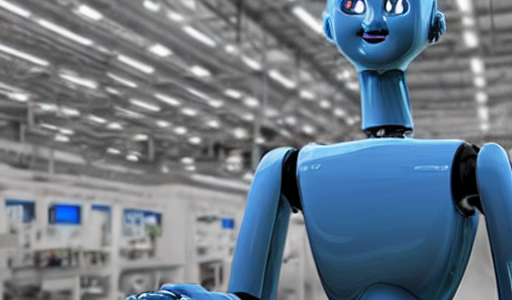We’ve been watching the development of humanoid robots with interest, but Goldman Sachs has some sobering points to make.
For one thing, humanoid robots can only work for an hour or two without recharging. While one of the great things about automation in general is the ability of machines to work steadily 24/7 with no coffee breaks and no complaining, humanoid robots are a big exception to that rule.
Another drawback Goldman Sachs points out is that so far, humanoid robots can be smart or strong, not both. There are some humanoid robots with impressive cognitive abilities and some with impressive agility, but none that show even moderate amounts of both skills.
And while we’re looking at what they can do, Goldman Sachs reminds us that there are actually no commercially viable humanoid robots in existence so far. None.
Goldman Sachs offers a solution. All those humanoid robots need, their report says, is to become much better than they are now and also to become much cheaper. We paraphrase, but that’s the gist of it.
In detail
One of the main disadvantages of humanoid robots is their cost. Developing a humanoid robot is an expensive endeavor. They require a large amount of hardware and software components, as well as sophisticated programming. This makes them more expensive than other types of robots.
In addition to their cost, humanoid robots also have limited capabilities. While they can perform basic tasks, they are not as capable as other robots in more complex tasks. They are also not as agile as other robots and can be slower to react to changes in their environment.
Another downside of humanoid robots is their potential for misuse. As they become more advanced, they could potentially be used for nefarious purposes, such as espionage or even sabotage. This could lead to major security risks. As such, it is important to have safeguards in place to prevent such misuse.
Finally, humanoid robots may be seen as a threat to human jobs. As they become more and more advanced, they may be used to replace humans in certain tasks. This could lead to job losses and a decrease in wages due to competition from robots. Goldman Sachs rec9gnizes this but doesn’t see it as a drawback. They note with a little bit of glee that the improved humanoid robots they imagine could fill up to 126% of the current labor gap in just a few short decades.
They just need to get to the point of working 20 hours between charges and being both smarter and more agile.
Conclusion
Goldman Sachs is actually in favor of investing in humanoid robots (at least we think they are, with the previously mentioned caveats).
No matter what shape robots take, motion control will continue to be essential. If you’re still using Indramat in your facility — and plenty of factories and printing presses are — you know you have excellent drive and control systems in place. We can help you keep them running.
Call (479) 422-0390 for immediate assistance.



